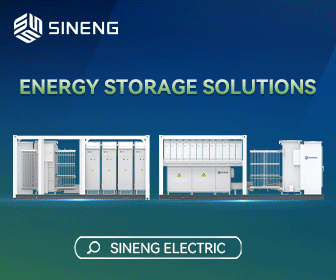CellCube to Spin Out Vanadium Assets to a New Vanadium Focused Public Company and to Make Special Distribution to Shareholders
CellCube Energy Storage Systems Inc. ("CellCube" or the "Company") (CSE: CUBE) (OTC: CECBF) (Frankfurt: 01X) is pleased to announce the Company intends to spin out its 100% owned vanadium project, Bisoni Mackay and Bisoni-Rio in Nevada, USA, into a newly formed subsidiary called Vanadium 23 Corp. ("Vanadium 23").
Vanadium prices have increased over 320% since January 2017 with V2O5 prices now approximately US $17 per pound. Vanadium, widely used as an alloy to strengthen steel and in vanadium flow batteries for the energy storage industry, is the best performing battery metal over this time period surpassing cobalt, copper and nickel.
Upon completion of the spin out arrangement, the Company intends to issue one (1) share of Vanadium 23 for every two (2) shares of CellCube held by CellCube shareholders of record. The Company intends to retain a 19.9% interest in Vanadium 23.
Transaction highlights:
- Vanadium 23 will be a publicly listed independent vanadium exploration and production company with advanced projects in Nevada.
- Distribution of a share dividend to CellCube shareholders with CellCube retaining a 19.9% ownership as well as certain off-take rights and a net smelter royalty.
- The formation of a new "pure play" vanadium company, Vanadium 23, that will fast track its drilling programs on the vanadium projects to upgrade its Indicated and Inferred Resources. On completion of the planned drilling, a new NI 43-101 Technical Report will be commissioned to develop a new resource estimate. It is planned to follow this by commissioning a Preliminary Economic Assessment.
- A National Instrument 43-101 Indicated Resource of 11.9 million tons at an average grade of 0.39 per cent vanadium pentoxide (V2O5), and an Inferred Resource of 7.0 million tons at an average grade of 0.42 per cent V2O5 (see Company news release Sept. 13, 2016). Only 12 per cent of the Bisoni McKay area has been drilled, and none of the Bisoni-Rio which is contiguous with Bisoni McKay and sits between Bisoni and Prophecy's Gibellini vanadium deposit.
- Research currently conducted by the University of Calgary focussing on testing of the Bisoni McKay vanadium and its use for production of vanadium electrolyte is ongoing. The University of Calgary will be performing tests using a laboratory test battery that has been provided by Enerox GmbH.
The proposed spin-out transaction will be subject to shareholder approval.
Vanadium 23 will be highly focused on creating a portfolio of high quality vanadium assets on a global scale. Furthermore, Vanadium 23 will already have supply agreements with its parent company, CellCube, a leading vanadium battery manufacturer, for its vanadium requirements for their large vanadium flow batteries.
"The new CellCube management team quickly identified the opportunity to create a stand-alone vanadium company with size and scale that will solely focus on developing its current vanadium properties into reserves, and ultimately, product for the battery storage and technology industries," stated Mike Neylan, CEO of CellCube. "Specialized purified vanadium has been one of the best performing commodities over the past two years and demand is only growing while supply is quite restricted due to the requirement of obtaining high purity vanadium for end users."
"In addition, the intended spin out will allow CellCube and its management team to firmly focus on its energy storage solutions while ensuring a vertically integrated supply chain of high purity vanadium," added Mr. Neylan.
Chris M. Healey, P. Geo, geological consultant to CellCube, is the independent Qualified Person who has reviewed and approved the scientific and technical contents of this press release.
About CellCube's Vanadium Assets:
CellCube's Bisoni McKay and Bisoni-Rio project is one of the largest pure play vanadium projects in North America totalling 4,115 acres contiguous to the Gibellini deposit held by Prophecy Development Corp. Vanadium is most often found in association with other metals such as iron, lead or uranium that must first be removed before vanadium recovery. Exploration and drilling to-date has indicated that Bisoni McKay's pure play vanadium resource does not possess significant concentrations of any of these metals.
Only 12 per cent of the Bisoni McKay area has been drilled, and none of the Bisoni-Rio, which has already resulted in the estimation of a National Instrument 43-101 Indicated Resource of 11.9 million tons at an average grade of 0.39 per cent vanadium pentoxide (V2O5), and an Inferred Resource of 7.0 million tons at an average grade of 0.42 per cent V2O5 (see company news release Sept. 13, 2016). The Indicated Resource is contained in a zone approximately 300 metres in strike length, while the Inferred Resource covers approximately an additional 200 m of strike length extending to the south. The mineralized zone appears to be open at depth and extends to the north into the Bisoni-Rio property. In 2017, CellCube staked 162 claims on the Bisoni-Rio property from the Bisoni McKay right up to and abutting the Gibellini vanadium property.
The vanadium belt of central Nevada is host to an important concentration of single product vanadium deposits in North America. CellCube's Bisoni McKay property is a high-grade, pure play vanadium project located in the vanadium belt of central Nevada. Past exploration drilling reveals the occurrence of high-grade V2O5 (vanadium oxide) in the primary (carbonaceous shale) mineralized material which contains the largest vanadium resource on the property. Several drill holes completed in primary mineralization suggest the deposit is open at depth in some areas. A supergene enrichment zone of up to 35 feet in width has been identified immediately below the redox zone.
Vanadium most commonly occurs in association with other metals forming complex mineral deposits such as titaniferous magnetite and uranium-vanadium deposits where vanadium is mined as a co-product. This results in vanadium extraction being dependent on the economic value of other commodities.
CellCube | www.cellcubeenergystorage.com









